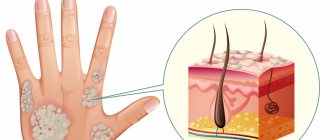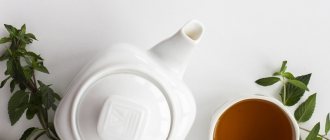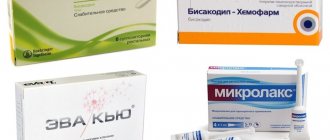Home » Articles » How to give yourself an enema if you are constipated?
A cleansing enema is a useful procedure that will help a person improve his condition quickly enough, without resorting to any medicinal methods. Enemas are in demand both among people with regular bowel retention and among those who are actively dieting, because the process ensures cleansing of the intestines from toxins.
However, the benefits of rectal lavage are observed only when a person does everything correctly. How to give an enema yourself? Is this real or will I have to turn to professionals? Our article will tell you everything.
When should an enema be used?
Cleansing the intestines may be necessary both to prepare for further medical procedures and to facilitate the act of defecation. Among the main indications for performing an enema:
- prolonged constipation (3 or more days);
- preparation for x-rays of the gastrointestinal tract, pelvic organs - urinary and reproductive systems;
- preparation for rectal endoscopy;
- immediately before birth;
- preparation for any abdominal operations;
- preparation before a visit to the proctologist.
It is recommended to rinse the rectum before administering a medicinal or vitamin enema to ensure good absorption of drugs and microelements.
Patients are often interested in how to perform an enema themselves, so that they do not have to call a specialist or go to the hospital. But in some cases, you cannot do without consulting a doctor, because even such a useful procedure as rectal lavage has a number of contraindications:
- stomach and intestinal bleeding;
- hemorrhoids and anal fissures;
- colon cancer;
- prolapse;
- the first 5 days after surgery on the gastrointestinal tract.
If you are not sure that a cleansing enema is safe for you, it is better to postpone the procedure until a professional arrives. By calling MedInHome specialists, you ensure that any manipulations are carried out at the highest level. In addition, all services are anonymous - only you and he will know about the doctor’s visit.
Constipation in children
Constipation is a common problem in children (up to 53%)1, impairing quality of life2. Symptoms of constipation include: a decrease in the frequency of the child going to the toilet less than 3 times a week; hard, scanty stool; a feeling of incomplete emptying of the intestines and the need for additional efforts (prolonged, sometimes unsuccessful straining) 3. Constipation can also contribute to the occurrence of pain, inflammation of the intestines, changes in its microflora and decreased immunity3.
What types of enemas are there?
According to the final purpose of application, a number of procedures are distinguished:
- cleansing enema - used for intestinal obstruction and severe constipation, as well as for the purpose of detoxifying the body after food poisoning (the injected solution must be excreted along with the feces);
- therapeutic enema - small-volume rinsing (usually up to 100 ml), when solutions of medicinal substances, plant decoctions and biologically active preparations are introduced into the intestine (kept inside for up to half an hour, usually must be absorbed);
- vitamin enema - administration of vitamin solutions when oral administration does not achieve the desired effect;
- nutritional enema is a procedure for seriously ill patients; a solution in a volume of up to 1 liter is administered dropwise, followed by absorption by the intestinal walls.
If we classify the procedure according to the amount of fluid administered, then we distinguish:
- Microclysters are a small volume, usually 5-100 ml of some medicinal solution.
- Standard enemas for rinsing - the volume of liquid ranges from 1 to 2 liters.
- Siphon enemas provide cleansing not only of the rectum, but of the entire intestine as a whole. The total volume of injected liquid can exceed 15 liters, but the solution is not poured in immediately, but in parts. During breaks, the patient empties.
When thinking about how to give an enema to yourself, patients usually stop at rinsing with water. We have already talked about another group, medicinal enemas, but there are also solutions with different compositions:
- soap enemas - relevant for constipation, as the liquid activates intestinal motility and stimulates the waste of feces;
- glycerin enemas - similar to soap enemas, have a good effect on peristalsis;
- salt enemas - also called hypertonic, when the patient is injected with a solution of table salt and magnesium;
- oil enemas - the procedure is performed using organic oils, usually as a protection for the intestinal mucosa before other types of manipulation.
There are also soda and sour enemas, and in the past, surgeons used “fire” enemas - a mixture of glycerin, hydrogen peroxide and soapy water, which helped to start the intestines even in a patient with complete atony.
For some helminthic infections, an oxygen enema is used, when a small amount of air enriched with oxygen is pumped into the patient’s rectum. Some types of parasites cannot tolerate high concentrations of oxygen, which is why helminthiasis is eliminated in this way.
And, of course, enemas differ in the temperature of the injected liquid:
- cold (from zero to room temperature);
- cool (23-26 degrees);
- warm (corresponding to the temperature in the rectum - approximately 37.1-37.5);
- hot (from 40 to 43 degrees, above 45 is prohibited, as this can cause a thermal burn to the surface of the mucous membrane).
Types of cleansing procedures
It was mentioned above: depending on the composition of the solution, the effects of the procedure on the body vary.
Siphon enema
Complicated procedure. It is recommended to carry out it only in a hospital setting; it is difficult to do it yourself, unsafe, and easy to harm the body. Appropriate conditions for staging are required. The essence of this cleansing: there is an intensive infusion of water into the body, then there is an exit, then again there is an infusion of liquid into the body, followed by draining of the water.
The action is repeated several times. The number of repetitions depends on the intestinal slagging. For some patients three infusions are enough, for others ten is not enough. The procedure is monitored by a doctor so that in case of an unexpected reaction from the body, it can be stopped.
Hypertensive enema
This variety is simpler. The action is explained by the presence of salt in the solution. It softens the masses of feces, removing them from the body naturally. The solution remains inside for a short time, exerting an effect, after which a gentle release from the accumulated masses occurs. Special solutions containing salt have been created. Allowed for staging at home.
How to give an enema correctly?
It is important to understand that each type of enema implies certain rules of use.
Regular "pear"
Probably everyone has the simplest rubber bulb. It is the one that is most often used for cleansing the rectum. The procedure is carried out in the bathroom for greater convenience. What do we have to do?
- Prepare the water: boil and cool to room temperature, maybe a little warmer, around 37-38 degrees.
- Wash and dry the pear. Fill it with water, lubricate the tip with Vaseline and gently insert it into the anus.
- The strength of the jet and the speed of liquid injection can be adjusted independently.
- Once the contents have been completely inserted, you should wait a few minutes and then empty.
- Continue manipulations until absolutely clean water comes out of the rectum.
Very often, pregnant patients want to cleanse the intestines themselves after their water has broken, as they are embarrassed to carry out the procedure in the hospital. In such a situation, you should not panicky search on the Internet how to give an enema yourself, because it is much more important to get to the doctor on time and get ready for childbirth than to waste time on any independent procedures - especially since colon lavage is not always necessary for pregnant women.
Classic method with Esmarch mug
Esmarch's mug is a more complicated version of the enema, more often it is used directly in medical institutions. However, the device is on the market, so many patients who regularly suffer from constipation buy it for themselves.
So, how to give an enema yourself using an Esmarch mug? Special educational video from a medical school
There is also a short guide:
- Prepare the water in the same way as with a rubber bulb.
- Fill the mug with boiled and cooled water, and then hang it at a height of about 1 meter.
- Drain some water to release any air in the spout.
- The tip should be lubricated with Vaseline or oil (only vegetable oil is allowed).
- Spread a strong oilcloth on the bed and place a basin next to it. The edge of the oilcloth should hang over the basin in case the patient is unable to retain water.
- You need to lie on your left side and pull your knees to your chest. Gently spread the buttocks and, using rotational movements, insert the lubricated tip into the rectum to a depth of 6-7 cm.
- Turn the tap on the tip. The degree of unscrewing regulates the speed of incoming water.
- Keep track of the amount of water in the mug. It is necessary to close the tap before all the liquid has flowed out, so that air does not enter the intestines.
- When the procedure is completed, remove the tip and lie down for 20 minutes, then you can void.
- An hour after the first manipulation, a second one is performed if the desired result is not achieved.
Modification of Esmarch's method according to Hegar
For this method you will also need an Esmarch mug, but now it is better to carry out the procedure in the bathroom. Stages of intestinal lavage:
- Hang a mug of water and check that there is no air in the spout.
- Lubricate the tip with Vaseline or oil.
- Take a pose on all fours so that your body rests on two knees and one elbow - with your other hand you will control the unscrewing of the tap.
- Insert the tip into the rectum to a depth of 6-7 cm.
- Turn on the water supply, lower your head and shoulders down, and watch your breathing. You need to inhale through your nose and exhale through your mouth - slowly and rhythmically.
- Once all the liquid is in the intestines, close the tap and remove the tip.
- It is more difficult to retain water than with the previous method, so it is recommended to wait no more than 10 minutes. The easiest way to spend this period of time is lying on your back; the urge is less pronounced.
- After defecation, at least 40 minutes must pass before repeating the procedure.
All three methods, when performed correctly, should not cause pain or discomfort.
What you need to know to relieve constipation at home
The rules for setting up an enema are described. It is worth taking them into account when performing a liberating intestinal lavage.
- A laxative enema is not considered a treatment. It is placed to relieve constipation, free the large intestine from feces, activating peristalsis. It does not directly affect the source of constipation. It is important to establish the cause of the disease before starting treatment in order to act directly on it. It is worth visiting a doctor, undergoing the necessary examination, and taking tests. Armed with the results obtained, you can count on an effective result.
- It is worth considering: all drugs related to laxatives are addictive. The intestines begin to get lazy. Especially when the products are used without interruption for 10 days. Natural atony of the intestinal muscles occurs. Enemas are also addictive. It's better not to allow this!
- The variety of laxatives on pharmaceutical markets leaves a person with a difficult choice: what to buy. Medicines have different effects on the body. It is worth purchasing a product with minimal side effects. The doctor will help you make your choice. Microlax is recognized as an excellent remedy. Even a recently born child can take it. The mentioned drug is absolutely safe.
- There are cases when administering a laxative enema or other laxatives is not recommended: there is pain in the abdominal area, and unknown discharge from the rectum. This is a serious reason to get examined.
Reviews from doctors about the procedure
Performing a cleansing enema is what doctors advise for long-term constipation. Of course, you will have to spend a little time figuring out how to give an enema yourself, but the result will be worth it.
Vladimir Pavlovich Kiriyenko, proctologist: “Timely lavage of the intestines quickly improves the condition of patients - there is no point in dragging on to the point of fainting. In addition, when performing manipulations at home, either independently or with the help of calling a doctor, patients do not experience such embarrassment as in the hospital.”
Doctors remind us of the importance of consulting with a professional: the patient does not always know that he has contraindications to the procedure.
According to surgeon A. Markovskaya: “The main obstacle to independent intestinal lavage is ignorance of the optimal volume and temperature of the administered fluid. It is very easy to harm yourself, so avoid self-medication as much as possible. Moreover, nowadays it is very easy to call a specialist to your home.”
Indications
A pear enema is indicated for acute constipation - in cases where stool retention occurs rarely and is not chronic. In addition, the procedure is carried out with caution if the patient has a so-called fecal impaction.
Fecal impaction is a condition in which an accumulation of feces forms in a certain area of the rectum. The lump gradually becomes denser, while gaps remain between it and the walls of the intestine, through which liquid feces pass and are expelled. The person thinks they are developing diarrhea and may start taking anti-diarrhea medications, which makes the problem worse.
With partial obstruction of the rectum, symptoms of intoxication quickly increase. Treatment of fecal impaction is carried out without laxatives. However, an enema is also used with caution: the procedure will help in cases where the enema tip freely penetrates above the stone and there is no risk of injuring the walls of the rectum.
In addition to constipation, there are other indications for cleansing the intestines with enemas:
- intoxication, poisoning;
- planned operations;
- upcoming birth;
- upcoming proctological examination;
- preparation for x-ray examination of the digestive, urinary and pelvic organs;
- preparation for endoscopic interventions;
- preparation for administering a medicinal enema.
Sometimes an enema is prescribed in the postoperative period, when one’s own stool is not observed after a certain time after surgery. Usually on the second or third day.
But for whatever indication an enema is planned, it is important to remember that this procedure must be carried out only with a doctor’s prescription. After all, there are a number of serious contraindications that you may not recognize in yourself.
Patient reviews
Patients themselves also often write on forums about their experience of using enemas - some use regular water enemas, some buy special ones with a solution (for example, Enema), while others call a specialist and choose the optimal composition of the liquid with him.
Maria, 25 years old, had her bowel lavaged before going for an endoscopy: “It’s the hardest thing to cleanse yourself properly, you’re always afraid of doing something wrong. She called the nurse and was even surprised that the enema was administered without discomfort. Fast and no problems, I recommend.”
Andrey D. shared another experience, a little less pleasant: “I had to give an enema before a visit to the proctologist, but for me it was the first experience of such a procedure - as a result, a lot of unpleasant sensations and damage to the mucous membrane. The doctor said that coming “unprepared” is not critical, it’s better not to harm the body and ask a specialist for help.”
Christina N. says: “For a couple of years now, my grandmother has been bedridden and moves little—hence the problems with stool. Recently we tried to give an enema with the help of a nurse, the result was excellent, I calmly emptied after half an hour. It’s a good method, and there’s no need to poison an elderly person with laxatives, she already has a lot of pills.”
From their impressions it is clear: constipation cannot always be prevented, because it appears from stress, from travel, and from unusual cuisine. An enema is a simple and affordable way to cleanse the intestines, so there are a lot of positive reviews.
Causes of constipation with hemorrhoids
Why does constipation develop with hemorrhoids ? There are several reasons.
- If hemorrhoids become inflamed, then when feces are released, they burst, even when the feces have formed normally. This causes pain, burning and a small amount of blood. To avoid such symptoms, a person can resist the urge to defecate. As a result, stool accumulates and hardens, leading to the formation of a fecal impaction.
- Constipation and hemorrhoids have common causes:
- passive lifestyle, sitting for a long time;
- childbirth and pregnancy;
- frequently occurring stressful situations;
- poor nutrition;
- hard physical work and overwork;
- period of menstruation in women;
- frequent use of enemas, etc.
Constipation due to hemorrhoids provokes inflammation of the hemorrhoidal intestine. If the intestines are not emptied for a long time, a pathogenic environment develops, which causes the appearance of new swellings. That is why it is very important to eliminate constipation in a timely manner. And to do this, you need to consult a doctor who will prescribe the correct treatment if you experience constipation due to hemorrhoids .
Recommended diet before visiting a proctologist
The day before a visit to the doctor, exclude fatty, fried, heavy fish and meat dishes, and mushrooms from the diet. It is advisable to eat vegetable soups, cereals, white meat chicken or turkey, a lot of vegetables and fruits, which stimulate peristalsis as they contain a lot of fiber.
You should not eat foods that cause gas formation in the intestines and flatulence: legumes, potatoes, cabbage, carbonated drinks, black and whole grain bread. It is necessary to completely eliminate alcohol, because it has a bad effect on the condition of the gastrointestinal tract.
On the day of your appointment, you should not eat for several hours before the proctological examination. If you go to the doctor in the first half of the day, it is better not to eat in the evening. If the reception is late in the evening, a light breakfast is allowed. You can drink water, fruit juices without sugar and pulp until your appointment.
If the reception takes place in the first half of the day, then there is no need to have breakfast. If in the second case and the patient cannot remain without food for a long time, then you can allow yourself a light breakfast of foods that do not cause gas formation.
It is recommended to take slippers, a diaper and toilet paper with you.









